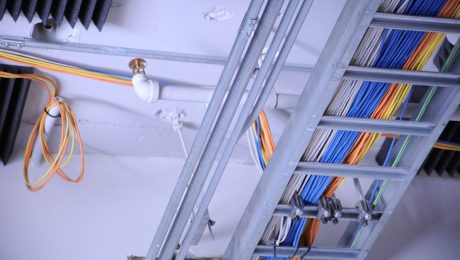Navigating the complex world of steel procurement can be challenging. The sheer variety of grades, specifications, and suppliers, coupled with fluctuating market prices and evolving industry standards, often leaves buyers feeling overwhelmed. This is where expert technical consulting comes in. This blog post will explore the crucial role technical consultants play in helping steel buyers make informed decisions, optimize their procurement processes, and ultimately achieve significant cost savings and improved product quality.
1. Defining Your Steel Needs: A Foundation for Success
Before diving into the market, a thorough understanding of your specific steel requirements is paramount. Technical consultants work closely with buyers to define these needs, considering factors like:
- Application: What is the steel being used for? This dictates the necessary mechanical properties (strength, toughness, ductility), chemical composition, and surface finish.
- Performance Requirements: What level of performance is expected from the steel in its application? Will it be subjected to high temperatures, corrosive environments, or significant stress?
- Budget Constraints: Establishing a realistic budget early on is crucial. Consultants help balance quality requirements with cost considerations.
- Lead Times: Understanding project timelines helps determine the most efficient sourcing strategy and ensures timely delivery.
- Volume Requirements: The quantity of steel needed significantly impacts pricing and supplier selection.
By meticulously defining these parameters, consultants create a clear roadmap for the procurement process, minimizing the risk of costly mistakes and delays.
2. Material Selection and Specification Expertise: Choosing the Right Steel
The steel market offers a dizzying array of grades and specifications. Selecting the most appropriate material for a given application requires specialized knowledge. Technical consultants possess this expertise, helping buyers navigate the complexities of:
- Steel Grades: Understanding the differences between carbon steel, alloy steel, stainless steel, and other specialized grades, and their respective properties.
- Industry Standards: Familiarity with relevant international and national standards (e.g., ASTM, EN, JIS) ensures compliance and quality assurance.
- Material Data Sheets (MDS): Interpreting and analyzing MDS to verify that the chosen steel meets the required specifications.
- Testing and Certification: Understanding the necessary testing procedures to validate the steel’s properties and ensuring compliance with certifications.
- Substitute Materials: Exploring potential alternative materials that offer comparable performance at a lower cost.
This expertise ensures that the selected steel is not only fit for purpose but also cost-effective and compliant with all relevant regulations.
3. Supplier Selection and Negotiation: Securing the Best Deals
Finding reliable and cost-effective steel suppliers is a critical aspect of procurement. Technical consultants assist buyers by:
- Identifying Potential Suppliers: Leveraging their network and market knowledge to identify suitable suppliers based on capacity, reputation, and geographical location.
- Supplier Qualification: Assessing supplier capabilities, including their quality control systems, production capacity, and delivery reliability.
- Negotiating Contracts: Assisting in contract negotiations to secure favorable pricing, payment terms, and delivery schedules.
- Risk Management: Identifying and mitigating potential risks associated with supplier performance, including supply chain disruptions and quality issues.
- Building Long-Term Relationships: Facilitating the development of strong, collaborative relationships with key suppliers.
This comprehensive approach ensures that buyers secure the best possible terms while minimizing risks and maintaining a consistent supply of high-quality steel.
4. Quality Control and Assurance: Ensuring Conformance
Maintaining quality throughout the steel procurement process is essential. Technical consultants help buyers implement robust quality control measures, including:
- Incoming Inspection: Overseeing the inspection of incoming steel to verify that it conforms to the specified requirements.
- Non-Destructive Testing (NDT): Utilizing NDT methods to detect flaws and imperfections in the steel without causing damage.
- Destructive Testing: Conducting destructive testing to determine the mechanical properties of the steel.
- Traceability and Documentation: Maintaining comprehensive documentation to track the steel’s origin, processing, and testing history.
- Corrective Actions: Implementing corrective actions to address any quality issues that arise during the procurement process.
This rigorous approach ensures that the steel received meets the required quality standards, minimizing the risk of defects and rework.
5. Cost Optimization and Value Engineering: Maximizing ROI
Reducing procurement costs without compromising quality is a key objective for many buyers. Technical consultants help achieve this through:
- Value Engineering: Analyzing the design and specifications to identify opportunities for cost reduction without sacrificing performance.
- Negotiation Strategies: Employing effective negotiation techniques to secure favorable pricing and payment terms.
- Supply Chain Optimization: Improving the efficiency of the steel supply chain to reduce lead times and transportation costs.
- Inventory Management: Optimizing inventory levels to minimize storage costs and reduce the risk of obsolescence.
- Waste Reduction: Identifying and eliminating sources of waste throughout the procurement process.
By implementing these strategies, consultants help buyers maximize their return on investment and achieve significant cost savings.
In conclusion, technical consulting for steel buyers offers a wealth of benefits, from improved material selection and supplier management to enhanced quality control and cost optimization. By partnering with an experienced consultant, steel buyers can navigate the complexities of the market with confidence, ensuring the procurement of high-quality steel that meets their specific needs and contributes to the overall success of their projects.
SEO Tags:
steel buying, technical consulting, steel procurement, steel quality, cost optimization
The phrase “000 ton/year production capacity” represents a significant milestone for any manufacturing or production-based business. While the specific number “000” is a placeholder, representing a scale that needs to be filled in based on the specific industry and product, the concept itself is crucial for understanding operational efficiency, market competitiveness, and future growth potential. This post delves into the multifaceted implications of achieving and maintaining such a capacity.
1. Defining and Assessing 000 Ton/Year Capacity: A Baseline Understanding
Before diving into the complexities, it’s essential to define what “000 ton/year production capacity” actually means. This figure represents the maximum amount of a specific product (measured in tons) that a facility can produce within a year, operating under optimal conditions. “Optimal conditions” include factors like efficient equipment utilization, minimal downtime, skilled workforce, and readily available raw materials. Assessing this capacity requires a thorough analysis of the entire production process, from raw material procurement to final product packaging and distribution. This involves identifying bottlenecks, evaluating equipment capabilities, and forecasting demand accurately. The “000” placeholder needs to be replaced with the actual production target, which will vary greatly depending on the industry and product. For example, a cement plant might have a capacity in the millions of tons per year, while a specialty chemical producer might operate at a much smaller scale.
2. Scaling Challenges: From Pilot Production to 000 Ton/Year Output
Scaling up production from a pilot plant or smaller-scale operation to 000 ton/year presents numerous challenges. One major hurdle is infrastructure. Facilities need to be expanded, upgraded, or even entirely rebuilt to accommodate the increased throughput. This involves significant capital investment in equipment, land, and utilities. Furthermore, scaling up requires a robust supply chain capable of delivering the necessary raw materials consistently and efficiently. Human resources also play a critical role. Training and recruiting a larger and more skilled workforce is essential, and efficient management systems are needed to oversee the expanded operation. Finally, quality control becomes more critical at larger scales, requiring sophisticated monitoring and testing procedures to maintain product consistency and meet regulatory standards.
3. Market Impact and Competitive Advantage: The Implications of Scale
Achieving a 000 ton/year production capacity significantly impacts market positioning and competitive advantage. Larger production volumes often translate to lower per-unit costs due to economies of scale. This allows for more competitive pricing, increased market share, and higher profitability. Furthermore, a larger capacity can provide greater flexibility in meeting fluctuating demand and responding quickly to market opportunities. However, it’s important to note that simply having a large capacity doesn’t guarantee success. Effective marketing and distribution strategies are crucial to reach target markets and convert production capacity into actual sales.
4. Optimization Strategies: Maximizing Efficiency at 000 Ton/Year
Maintaining and optimizing a 000 ton/year production capacity requires continuous improvement efforts. This involves implementing lean manufacturing principles to eliminate waste and improve efficiency. Regular maintenance and preventative measures for equipment are crucial to minimize downtime and maximize uptime. Data analytics and process automation can play a vital role in identifying areas for improvement and optimizing production flows. Investing in advanced technologies, such as predictive maintenance and real-time monitoring systems, can further enhance efficiency and minimize disruptions. Supply chain optimization is also critical, ensuring timely delivery of raw materials and efficient management of inventory.
5. Sustainability and Environmental Considerations: Responsible Production at Scale
Achieving a 000 ton/year production capacity necessitates a strong focus on sustainability and environmental responsibility. Larger production volumes often translate to a larger environmental footprint. Therefore, it’s crucial to implement strategies to minimize waste, reduce energy consumption, and limit emissions. This might involve adopting cleaner production technologies, implementing recycling programs, and investing in renewable energy sources. Furthermore, adhering to relevant environmental regulations and obtaining necessary certifications can enhance the company’s reputation and attract environmentally conscious customers. Transparency and accountability in environmental performance are also essential for building trust with stakeholders.
In conclusion, achieving and maintaining a 000 ton/year production capacity is a complex undertaking that requires careful planning, significant investment, and ongoing optimization efforts. However, the potential rewards – increased market share, lower costs, and enhanced profitability – are substantial. By addressing the challenges and embracing best practices, businesses can unlock the full potential of their production capacity and achieve sustainable growth.
Tags: production capacity, manufacturing, scaling production, optimization strategies, supply chain management, market impact, sustainable production, economies of scale, industrial production, capacity planning
body {
font-family: sans-serif;
line-height: 1.6;
}
h1, h2, h3 {
color: #333;
}
h1 {
font-size: 2.5em;
}
h2 {
font-size: 2em;
}
h3 {
font-size: 1.5em;
}
img {
max-width: 100%;
height: auto;
}
Construction nails are seemingly simple components, yet their selection significantly impacts the structural integrity and longevity of any building project. Understanding the standards and durability aspects of different nail types is crucial for professionals and DIY enthusiasts alike. This comprehensive guide delves into the key factors influencing nail performance, helping you choose the right nail for the job.
Understanding Nail Size and Gauge: The Foundation of Strength
Nail size is expressed in two ways: length and gauge. Length is straightforward, measured in inches from the point to the head. Gauge refers to the thickness of the nail shaft; a lower gauge indicates a thicker nail, and thus, greater strength and holding power. Common gauge ranges for construction nails span from 6d (sixpenny) to 60d (sixtypenny), with each size increment representing a small increase in length and gauge. For example, a 16d nail is significantly larger and stronger than a 6d nail. Choosing the appropriate length is crucial for adequate penetration into the material being fastened. Under-penetration can result in weak joints, while over-penetration can lead to damage or splitting.
Material Matters: Exploring Common Nail Types and Their Properties
The material of a nail significantly affects its durability and resistance to corrosion. Common construction nail materials include:
- Steel: The most common type, offering good strength and relatively low cost. However, steel nails are susceptible to rust in outdoor or damp environments. Galvanized steel nails, coated with zinc, provide significantly improved corrosion resistance.
- Stainless Steel: Offers superior corrosion resistance compared to steel, making it ideal for exterior applications and marine environments. While more expensive, its longevity often justifies the higher cost.
- Aluminum: A lightweight option that offers good corrosion resistance. However, it’s less strong than steel and is typically used for softer woods or applications where weight is a concern.
- Copper: Primarily used for specialized applications due to its high cost. Offers excellent corrosion resistance and is often preferred for applications where aesthetics are important.
Nail Coatings and Their Role in Durability
Various coatings enhance nail durability and performance. These include:
- Galvanizing: A zinc coating that protects steel nails from rust. The thickness of the zinc coating determines the level of corrosion protection.
- Electroplating: A process that applies thin layers of other metals (like zinc or copper) to enhance corrosion resistance and aesthetics.
- Paint Coatings: These add color and some level of corrosion resistance, but are generally less durable than galvanizing or electroplating.
The choice of coating depends heavily on the intended application and the level of corrosion protection required.
Standards and Specifications: Navigating Industry Guidelines
Several organizations define standards for construction nails. These standards specify dimensions, material properties, and performance requirements. Adherence to these standards ensures consistent quality and reliability. For example, ASTM International (ASTM) publishes numerous standards related to nails, covering aspects like dimensions, mechanical properties, and testing methods. Understanding these standards is critical for ensuring the nails used meet the necessary performance criteria for a given project.
Choosing the Right Nail for the Job: A Practical Guide
Selecting the appropriate nail requires considering several factors:
- Wood Type: Hardwoods require stronger nails than softwoods. The density and hardness of the wood influence the nail’s penetration and holding power.
- Application: Nails for framing require different properties than those for finishing work. Framing nails are typically larger and stronger to withstand significant loads.
- Environmental Conditions: Exterior applications necessitate corrosion-resistant nails, such as galvanized or stainless steel nails.
- Aesthetic Considerations: In some applications, the nail’s appearance might be important, influencing the choice of material and coating.
Consulting with a building professional or reviewing relevant building codes can help ensure the correct nail selection for your specific project.
By understanding the factors discussed above, you can make informed decisions about nail selection, ensuring the structural integrity and longevity of your construction projects. Remember, seemingly small details like nail type and quality can significantly impact the overall success of any building endeavor.
SEO-Friendly Tags:
- Construction Nails
- Nail Gauge
- Nail Durability
- Construction Nail Standards
- Types of Construction Nails
GloballSteel stands as a prominent player in the global steel industry, renowned for its commitment to quality, innovation, and customer satisfaction. This post provides a comprehensive overview of the GloballSteel product portfolio, detailing the diverse range of steel products offered and their applications across various sectors.
Carbon Steel: The Foundation of Strength
Carbon steel forms the bedrock of GloballSteel’s offerings. Its versatility and cost-effectiveness make it suitable for a wide array of applications. GloballSteel produces a range of carbon steel grades, each tailored to specific performance requirements. These include:
- Mild Steel: Characterized by its low carbon content, mild steel is highly formable and weldable, making it ideal for construction, automotive parts, and general fabrication.
- Medium Carbon Steel: Offering enhanced strength and hardness compared to mild steel, medium carbon steel is frequently used in machinery components, tools, and structural elements requiring greater durability.
- High Carbon Steel: With its high carbon content, this grade boasts exceptional strength and hardness, making it suitable for applications demanding high wear resistance, such as cutting tools, springs, and high-strength fasteners.
GloballSteel’s commitment to quality control ensures that its carbon steel products consistently meet or exceed industry standards, providing customers with reliable and durable materials.
Alloy Steel: Enhancing Performance Through Alloying
GloballSteel’s alloy steel range represents a significant advancement in material properties. By introducing alloying elements like chromium, nickel, molybdenum, and manganese, GloballSteel enhances the strength, toughness, corrosion resistance, and other critical properties of steel. These alloys find application in:
- High-Strength Low-Alloy (HSLA) Steels: These steels provide superior strength-to-weight ratios, making them ideal for applications requiring lightweight yet robust structures, such as bridges, pipelines, and automotive components.
- Tool Steels: Specifically designed for tooling applications, GloballSteel’s tool steels offer exceptional hardness, wear resistance, and dimensional stability, essential for cutting tools, dies, and molds.
- Stainless Steels: GloballSteel’s stainless steel range exhibits excellent corrosion resistance, making them suitable for demanding environments. These are widely used in food processing, chemical plants, and architectural applications.
GloballSteel meticulously controls the alloying process to ensure consistent performance and reliability across its alloy steel products.
Stainless Steel: Resistance to Corrosion and Degradation
GloballSteel’s dedication to innovation extends to its extensive line of stainless steels. These alloys, primarily containing chromium, exhibit exceptional resistance to corrosion and oxidation, making them invaluable in various industries. The portfolio includes different grades tailored to specific needs:
- Austenitic Stainless Steel: Known for its excellent ductility and weldability, this grade is frequently used in food processing equipment, chemical tanks, and architectural cladding.
- Ferritic Stainless Steel: Offering good corrosion resistance and magnetic properties, this grade is often used in automotive exhaust systems and appliances.
- Martensitic Stainless Steel: Combining good strength and hardness with corrosion resistance, this grade finds application in cutlery, surgical instruments, and other high-strength components.
GloballSteel ensures its stainless steel products meet stringent quality standards, guaranteeing long-lasting performance and reliability.
Structural Steel: Building the Foundation of Modern Infrastructure
GloballSteel plays a crucial role in modern infrastructure development by providing high-quality structural steel. These steels are specifically designed for use in construction and engineering projects, meeting rigorous standards for strength, durability, and safety. The portfolio encompasses:
- Beams and Columns: Essential components in building frameworks, GloballSteel’s beams and columns ensure structural integrity and stability.
- Plates and Sheets: Used for various structural applications, including cladding, flooring, and wall panels, these products offer strength and durability.
- Sections and Shapes: GloballSteel provides a wide range of sections and shapes to meet the diverse needs of construction projects, offering flexibility in design and construction.
GloballSteel’s commitment to quality assurance guarantees that its structural steel products consistently meet or exceed relevant building codes and safety regulations.
Special Steels: Tailored Solutions for Specialized Applications
GloballSteel’s commitment to meeting diverse customer needs is evident in its range of special steels. These steels are engineered with specific properties to meet the demanding requirements of niche applications. Examples include:
- Maraging Steels: Known for their exceptionally high strength and toughness, these steels are used in aerospace and defense applications.
- Heat-Resistant Steels: Able to withstand high temperatures without significant loss of strength or dimensional stability, these steels are vital in power generation and petrochemical industries.
- Cryogenic Steels: Maintaining their strength and toughness at extremely low temperatures, these steels are crucial in cryogenic equipment and applications.
GloballSteel’s expertise in metallurgy and material science ensures that its special steels meet the most stringent performance criteria, providing reliable solutions for challenging applications.
GloballSteel’s comprehensive product portfolio reflects its dedication to providing high-quality steel solutions for a wide range of industries. The company’s commitment to innovation, quality control, and customer satisfaction ensures its continued success in the global steel market.
SEO Tags: GloballSteel, Steel Products, Steel Portfolio, Carbon Steel, Alloy Steel, Stainless Steel
Railways, the backbone of efficient transportation, rely heavily on a single, robust material: steel. From the tracks themselves to the bridges spanning valleys and the very carriages carrying passengers and freight, steel plays an indispensable role. This post delves into the multifaceted relationship between steel and railway infrastructure, exploring its applications, properties, and future prospects.
1. The Backbone of the System: Steel Rails and Track Components
The most obvious application of steel in railway infrastructure is the rail itself. These long, continuous lengths of steel provide the surface upon which trains travel. The choice of steel grade is crucial, balancing strength, durability, and resistance to wear and tear. High-carbon steel, often alloyed with manganese and other elements, is commonly used due to its high tensile strength and ability to withstand the immense forces exerted by passing trains. Beyond the rails themselves, other track components, such as fishplates (used to join rails), fastenings (holding the rails to sleepers), and even the sleepers themselves (in some designs using steel sleepers instead of timber or concrete), are also predominantly made from steel, highlighting its pervasive importance in track construction and maintenance.
2. Spanning the Gaps: Steel Bridges in Railway Networks
Railway lines often traverse challenging terrain, requiring bridges to overcome obstacles like rivers, valleys, and roadways. Steel’s high strength-to-weight ratio makes it an ideal material for bridge construction. Various bridge types utilize steel, including girder bridges, truss bridges, and arch bridges. Steel’s versatility allows for the creation of bridges with varying spans and load-bearing capacities. The design and fabrication of these steel bridges involve complex engineering calculations to ensure stability and safety under heavy loads and diverse environmental conditions. Regular inspection and maintenance are critical to prolong the lifespan of these vital structures.
3. Signaling and Safety: Steel’s Role in Railway Control Systems
Beyond the visible structures, steel plays a crucial role in the less-seen aspects of railway infrastructure, namely signaling and safety systems. Steel is used in the construction of signal masts, supporting structures for signal lights and sensors, and various components within the signaling equipment itself. The durability and reliability of steel ensure the safe and efficient operation of signaling systems, which are essential for preventing collisions and managing train traffic flow. The strength of steel is vital in ensuring these systems can withstand harsh weather conditions and potential impacts without compromising their functionality.
4. Rolling Stock: Steel’s Contribution to Train Construction
The trains themselves, the rolling stock, are largely constructed from steel. From the chassis and undercarriage to the body of the train, steel provides the structural integrity and strength needed to withstand the stresses of high-speed travel and heavy loads. Modern trains often incorporate high-strength low-alloy (HSLA) steels to reduce weight while maintaining strength, leading to improved fuel efficiency and reduced environmental impact. The design and manufacturing of train carriages involves intricate welding and fabrication techniques to ensure the safety and longevity of the rolling stock.
5. The Future of Steel in Railway Infrastructure: Innovations and Sustainability
The railway industry is constantly evolving, and steel continues to adapt to meet the demands of modernization and sustainability. Research into new steel alloys with enhanced properties, such as increased corrosion resistance and improved fatigue strength, is ongoing. The use of recycled steel in railway construction is also gaining momentum, contributing to a more environmentally friendly approach to infrastructure development. Furthermore, advancements in steel fabrication techniques, such as advanced welding processes and automated manufacturing, are leading to more efficient and cost-effective construction methods. The integration of smart technologies, utilizing sensors and data analytics, is improving the monitoring and maintenance of steel railway infrastructure, leading to enhanced safety and efficiency.
In conclusion, steel is an indispensable component of modern railway infrastructure. Its strength, durability, and versatility make it the material of choice for a wide range of applications, from tracks and bridges to signaling systems and rolling stock. Continued innovation and a focus on sustainability will ensure steel’s continued crucial role in the future of railway transportation.
Tags: Steel in Railway, Railway Infrastructure, Steel Rails, Railway Bridges, Steel Construction
The pursuit of zero-defect production is a holy grail for many manufacturers. While achieving absolute perfection might remain elusive, striving for it drastically improves quality, reduces costs, and enhances customer satisfaction. This post delves into the strategies, challenges, and rewards of embracing a zero-defect mindset.
Understanding the Zero-Defect Philosophy
Zero-defect production isn’t about eliminating human error entirely; it’s about creating a culture of continuous improvement and relentless pursuit of perfection. It involves a fundamental shift in thinking, moving from reactive quality control (inspecting for defects after production) to proactive defect prevention. This necessitates a deep understanding of processes, identification of potential failure points, and implementation of robust preventative measures. The goal isn’t just to reduce defects, but to eliminate the root causes that create them in the first place.
Implementing Effective Quality Control Measures
Achieving zero-defect goals requires a multi-faceted approach to quality control. This includes:
- Statistical Process Control (SPC): SPC uses statistical methods to monitor and control processes, identifying variations and potential problems before they lead to defects. Control charts are a key tool in SPC, allowing for real-time monitoring and timely intervention.
- Total Quality Management (TQM): TQM is a holistic approach that emphasizes continuous improvement across all aspects of the organization. It involves empowering employees at all levels to identify and solve quality issues.
- Six Sigma Methodology: Six Sigma utilizes data-driven techniques to identify and eliminate defects, aiming for a defect rate of 3.4 defects per million opportunities. This methodology emphasizes process optimization and variation reduction.
- Regular Audits and Inspections: Routine audits and inspections, both internal and external, are crucial to identify potential problems and ensure compliance with quality standards. These audits should be focused on both the process and the product.
The Role of Employee Empowerment and Training
A zero-defect culture thrives on empowered employees. Training plays a pivotal role in achieving this. Employees need to understand the importance of quality, the processes they’re involved in, and the tools and techniques for identifying and preventing defects. This includes:
- Comprehensive Training Programs: Regular training on quality control procedures, problem-solving techniques, and the use of relevant tools and technologies is essential.
- Empowerment and Ownership: Employees should be empowered to stop the production line if they identify a potential defect, fostering a culture of responsibility and accountability.
- Feedback Mechanisms: Establishing clear channels for feedback allows employees to share their insights and contribute to continuous improvement efforts.
- Cross-functional Collaboration: Breaking down silos and encouraging collaboration across different departments fosters a shared understanding of quality goals and facilitates problem-solving.
Overcoming Challenges in Achieving Zero Defects
While the pursuit of zero-defect production offers significant benefits, it’s not without its challenges. These include:
- Cost of Implementation: Implementing robust quality control systems and training programs requires significant investment in time, resources, and technology.
- Resistance to Change: Changing established processes and cultures can meet resistance from employees accustomed to traditional methods.
- Complexity of Processes: In complex manufacturing processes, identifying and eliminating all potential sources of defects can be incredibly challenging.
- Human Error: Despite the best efforts, human error remains a persistent challenge. Focusing on error-proofing and human factors engineering can help mitigate this.
- Measuring Success: Defining and measuring success in a zero-defect environment requires careful consideration of metrics and KPIs.
The Benefits of a Zero-Defect Approach
The rewards of striving for zero-defect production are substantial:
- Improved Product Quality: The most obvious benefit is the significant improvement in product quality, leading to increased customer satisfaction and loyalty.
- Reduced Costs: Preventing defects is far cheaper than correcting them after production. This includes reduced rework, scrap, and warranty claims.
- Enhanced Efficiency: Streamlined processes and reduced waste lead to increased efficiency and productivity.
- Improved Reputation: A reputation for high quality attracts customers and enhances brand image.
- Increased Profitability: The combined effect of reduced costs and increased efficiency leads to improved profitability.
In conclusion, while achieving true zero-defect production might be an ideal, the journey towards it is invaluable. By embracing a culture of continuous improvement, implementing robust quality control measures, and empowering employees, manufacturers can significantly reduce defects, enhance quality, and boost profitability. The pursuit of perfection, even if unattainable, drives progress and fosters a culture of excellence.
Tags: zero-defect production, quality control, lean manufacturing, six sigma, kaizen
In industries where equipment endures significant shock and vibration, the reliability of connections is paramount. A failure in a connection can lead to catastrophic consequences, from equipment malfunction to safety hazards. This is where shock-resistant connection systems step in, providing robust and dependable solutions for even the most demanding environments.
Understanding the Challenges of Shock and Vibration
Shock and vibration represent significant threats to the integrity of connections. Sudden impacts, like those experienced during drops or collisions, generate high-energy forces that can easily damage conventional connectors. Similarly, continuous vibrations, common in machinery and transportation, can lead to fatigue failure over time, causing connections to loosen or break. These forces can manifest as tensile stress (pulling forces), compressive stress (pushing forces), shear stress (sliding forces), and bending stress, all of which can compromise the connection’s structural integrity. The magnitude and frequency of these forces determine the severity of the challenge, demanding specialized connection systems for optimal performance.
Design Principles for Shock-Resistant Connections
Designing effective shock-resistant connection systems involves several key principles. Firstly, **material selection** is crucial. Materials with high tensile strength, yield strength, and fatigue resistance, such as high-strength steels, titanium alloys, and certain advanced polymers, are preferred. Secondly, **geometric design** plays a vital role. Features like interlocking designs, increased surface area contact, and the use of compliant elements (materials that absorb energy) can significantly enhance shock absorption. Thirdly, **damping mechanisms** are often incorporated. These mechanisms, which can include elastomeric dampers or specially designed interfaces, dissipate energy from shock and vibration, minimizing the transmission of forces to the connection. Finally, **redundancy** is a critical design consideration. Employing multiple connection points or using backup systems ensures that even if one connection fails, the overall integrity of the system is maintained.
Common Technologies in Shock-Resistant Connection Systems
A variety of technologies are employed to create shock-resistant connections. These include:
- Bayonet couplings: These quick-connect systems utilize interlocking lugs for secure engagement, offering good resistance to vibration but potentially less resilience to high-impact shock.
- Threaded connections with locking mechanisms: Traditional threaded connections can be enhanced with locking nuts, lock washers, or thread adhesives to prevent loosening due to vibration. High-strength materials are crucial here.
- Hydraulic and pneumatic connectors: These systems often incorporate specialized seals and clamping mechanisms to maintain a leak-proof connection under pressure and vibration.
- Spring-loaded connectors: These designs use springs to maintain constant pressure on the connection, compensating for minor movements and vibrations.
- Positive locking mechanisms: These systems utilize pins, latches, or other features to ensure a secure and unambiguous connection, preventing accidental disengagement.
Applications of Shock-Resistant Connection Systems
The need for robust connections extends across numerous industries. Shock-resistant connection systems are vital in:
- Aerospace:** Aircraft and spacecraft experience extreme vibrations and shocks during launch and flight, necessitating incredibly reliable connections for critical systems.
- Automotive:** Vehicles encounter various shocks and vibrations from road conditions, requiring secure connections for components like engines, transmissions, and suspension systems.
- Military:** Military equipment often operates in harsh environments, demanding connections that can withstand extreme impacts and vibrations.
- Industrial machinery:** Heavy machinery experiences significant vibrations during operation, making reliable connections essential for safety and performance.
- Robotics:** Robots, particularly those in industrial settings, must withstand impacts and vibrations, requiring robust connections between their components.
Material Considerations for Enhanced Durability
The choice of materials significantly impacts the shock resistance of a connection system. High-strength alloys like stainless steel, titanium, and Inconel offer exceptional strength and corrosion resistance. However, their cost can be a factor. Advanced polymers, such as PEEK (polyetheretherketone) and ULTEM (polyetherimide), provide excellent strength-to-weight ratios and good resistance to chemicals and wear, making them suitable for specific applications. The selection process considers factors like the required strength, stiffness, weight, operating temperature, and the chemical environment. Often, a hybrid approach, combining different materials to leverage their respective strengths, is employed to optimize performance and cost.
In conclusion, the development and implementation of effective shock-resistant connection systems are crucial for ensuring the reliability and safety of equipment in diverse and demanding environments. Continuous advancements in materials science and engineering are pushing the boundaries of what’s possible, leading to ever more robust and dependable connections for future technologies.
Tags: shock resistant connectors, vibration damping, connection systems, industrial connectors, aerospace connectors
The steel industry is the backbone of countless modern structures and technologies. Ensuring the quality, safety, and reliability of steel products is paramount, and this is where the American Society for Testing and Materials (ASTM) standards play a crucial role. ASTM compliance in steel production isn’t just a checklist; it’s a commitment to excellence, guaranteeing consistent performance and minimizing risks.
Understanding ASTM Standards and Their Importance
ASTM International develops and publishes voluntary consensus standards for materials, products, systems, and services. These standards provide detailed specifications for various properties of steel, including chemical composition, mechanical properties (tensile strength, yield strength, elongation, hardness), and dimensional tolerances. Adherence to these standards ensures that steel produced meets predetermined quality levels, regardless of the manufacturer or location. This standardization is essential for interoperability, ensuring different steel components can be used together reliably in complex structures like bridges, buildings, and vehicles.
Compliance with ASTM standards provides several key benefits: increased safety, improved product reliability, enhanced global trade (facilitating acceptance of steel products across international markets), reduced disputes and legal issues, and improved overall efficiency in the manufacturing process. Failure to comply can lead to significant consequences, including structural failures, product recalls, legal liabilities, and reputational damage.
Key ASTM Standards for Steel Production
Numerous ASTM standards govern different types of steel and their applications. Some of the most commonly used standards include:
- ASTM A36: This standard specifies the requirements for structural steel, a widely used grade in construction and general engineering applications. It covers chemical composition, tensile properties, and bend test requirements.
- ASTM A572: This standard covers high-strength low-alloy structural steel, offering superior strength compared to A36 steel. It’s often used in demanding applications requiring higher load-bearing capacity.
- ASTM A992: This covers the specifications for high-strength low-alloy structural steel, specifically designed for use in building construction.
- ASTM A672: This standard outlines the requirements for high-strength low-alloy steel plates for pressure vessels, demanding stringent quality control during manufacturing.
- ASTM E8/E8M: This standard details the methods for conducting tensile testing of metallic materials, a fundamental test for assessing the mechanical properties of steel.
Choosing the appropriate ASTM standard is crucial depending on the intended application of the steel. Using the wrong grade can compromise the structural integrity of the final product.
The Role of Quality Control and Testing in ASTM Compliance
Achieving ASTM compliance necessitates a robust quality control (QC) system throughout the steel production process. This involves rigorous testing at various stages, from raw material inspection to finished product verification. Key aspects of QC include:
- Chemical Composition Analysis: Spectrometric analysis ensures the steel meets the specified chemical composition outlined in the relevant ASTM standard.
- Mechanical Testing: Tensile testing (ASTM E8/E8M), impact testing (Charpy or Izod), and hardness testing are performed to verify the mechanical properties of the steel.
- Dimensional Inspection: Verifying that the steel meets the specified dimensions and tolerances is crucial for proper fit and function.
- Non-Destructive Testing (NDT): Methods like ultrasonic testing, magnetic particle inspection, and radiographic testing are used to detect internal flaws without damaging the material.
- Documentation and Traceability: Maintaining detailed records of all testing and inspection procedures is essential for demonstrating compliance and traceability.
Accurate and reliable testing is paramount in ensuring that the produced steel conforms to the specified ASTM standard. Any deviation requires corrective actions and thorough investigation.
Consequences of Non-Compliance and Best Practices
Failure to comply with ASTM standards can have severe consequences, ranging from economic losses to safety hazards. Non-compliance can lead to:
- Product Recalls: If a defect is discovered that compromises safety, a product recall may be necessary, resulting in significant financial losses.
- Legal Liabilities: Non-compliance can expose manufacturers to lawsuits and legal action if their products cause damage or injury.
- Reputational Damage: A loss of trust and credibility can severely impact a company’s reputation and future business.
- Market Access Restrictions: Many countries and regions have regulations requiring compliance with ASTM or equivalent standards for importing steel products.
Best practices for ensuring ASTM compliance include investing in advanced testing equipment, employing skilled personnel, implementing a rigorous QC system, and maintaining meticulous documentation. Proactive measures like regular audits and continuous improvement initiatives are crucial for maintaining consistent compliance.
The Future of ASTM Compliance in Steel Production
The steel industry is constantly evolving, with new technologies and materials emerging. ASTM standards must adapt to these changes to remain relevant and effective. The future of ASTM compliance will likely involve:
- Increased use of advanced testing techniques: More sophisticated NDT methods and data analytics will improve the efficiency and accuracy of quality control.
- Development of standards for new steel grades: As new types of steel with enhanced properties are developed, new ASTM standards will be necessary to define their specifications.
- Greater emphasis on sustainability: ASTM standards will increasingly incorporate considerations for environmental impact and sustainable manufacturing practices.
- Digitalization and automation: The integration of digital technologies and automation in steel production will enhance traceability and efficiency in ensuring compliance.
Staying abreast of the latest ASTM standards and technological advancements is essential for steel manufacturers to remain competitive and ensure the production of high-quality, safe, and reliable steel products.
Tags: ASTM, ASTM compliance, steel production, steel standards, quality control
Brightwire is a powerful, open-source, and versatile machine learning library written in C#. It provides a comprehensive suite of tools for building and training neural networks, encompassing various deep learning architectures and algorithms. This guide delves into the core features that make Brightwire a compelling choice for your machine learning projects.
1. Modular and Extensible Architecture: Building Blocks for Your Neural Networks
Brightwire’s architecture is designed with modularity at its heart. This allows for easy customization and extension. Instead of a rigid, monolithic structure, Brightwire uses a system of interconnected modules. These modules represent different layers, activation functions, cost functions, and training algorithms. This modularity means you can easily swap components to experiment with different network configurations without extensive code rewriting. For instance, you could easily switch from a sigmoid activation function to a ReLU function, or change the optimizer from stochastic gradient descent to Adam without significant changes to your overall network structure. This flexibility is crucial for researchers and developers who need to adapt their models quickly and efficiently. Furthermore, Brightwire’s extensibility allows developers to create their own custom modules, extending the library’s functionality to support novel architectures and algorithms, pushing the boundaries of what’s possible.
2. Diverse Neural Network Architectures: From Simple to Complex Models
Brightwire supports a wide range of neural network architectures, catering to both beginners and experienced users. From simple feedforward networks to more complex recurrent neural networks (RNNs), convolutional neural networks (CNNs), and long short-term memory networks (LSTMs), Brightwire offers the building blocks for various applications. For beginners, the library simplifies the process of building basic networks, making it an accessible entry point to the world of deep learning. Experienced users will appreciate the flexibility to build sophisticated architectures tailored to specific tasks. The ability to effortlessly switch between different architectures allows for experimentation and optimization, helping users find the best model for their data and problem. This versatility is a key differentiator, making Brightwire a powerful tool for a wide range of applications, from image recognition to natural language processing.
3. Optimized Training Algorithms: Accelerating Your Model Development
Efficient training is paramount in machine learning. Brightwire offers a variety of optimized training algorithms to accelerate the learning process. It includes implementations of popular algorithms like stochastic gradient descent (SGD), Adam, RMSprop, and more. These algorithms are highly optimized for performance, enabling faster convergence and improved model accuracy. The choice of algorithm can significantly impact training speed and the final model’s performance. Brightwire allows users to easily experiment with different algorithms, comparing their effectiveness and selecting the best option for their specific needs. Furthermore, the library provides tools for monitoring the training process, allowing users to track metrics like loss and accuracy, providing valuable insights into the model’s learning progress.
4. GPU Acceleration: Harnessing the Power of Parallel Processing
For large datasets and complex models, training time can be significantly reduced by leveraging the parallel processing capabilities of GPUs. Brightwire supports GPU acceleration through CUDA, allowing users to harness the power of NVIDIA GPUs to significantly speed up the training process. This is crucial for tackling computationally intensive tasks, enabling faster experimentation and model development. The ability to easily switch between CPU and GPU execution provides flexibility for users with varying hardware configurations. This feature is particularly beneficial for researchers and developers working with large datasets or complex models, as it dramatically reduces training times, allowing for faster iteration and improved productivity.
5. Seamless Integration and Easy Deployment: From Development to Production
Brightwire is designed for ease of use and integration. Its clean API and well-documented code make it easy to learn and use, even for users with limited experience in machine learning. The library seamlessly integrates with other .NET libraries and frameworks, facilitating its use in various applications. Furthermore, deploying models trained with Brightwire is straightforward, making it suitable for both research and production environments. This ease of deployment reduces the overhead associated with moving models from development to production, enabling faster deployment cycles and quicker time-to-market for applications based on Brightwire models. The library’s focus on practicality and ease of use enhances its value for both academic and industrial applications.
Brightwire’s combination of modularity, diverse architectures, optimized algorithms, GPU acceleration, and seamless integration makes it a powerful and versatile tool for a wide range of machine learning tasks. Whether you’re a beginner exploring the world of neural networks or an experienced researcher pushing the boundaries of deep learning, Brightwire offers the tools and flexibility you need to succeed.
SEO-Friendly Tags:
- Brightwire
- Machine Learning Library
- Neural Networks C#
- Deep Learning Framework
- Open Source AI
In the construction and manufacturing industries, the strength and reliability of materials are paramount. Steel, a cornerstone of countless projects, demands rigorous quality control to ensure safety and performance. This is where CE certification comes in. This comprehensive guide will delve into the world of CE-certified steel products, explaining what it means, why it’s crucial, and how to navigate the market effectively.
What Does CE Certification for Steel Mean?
The CE marking (Conformité Européenne) is a mandatory conformity marking for products sold within the European Economic Area (EEA). It signifies that the product meets the essential requirements of relevant EU health, safety, and environmental protection legislation. For steel products, this means they adhere to specific European standards (EN standards) covering aspects like mechanical properties, chemical composition, and manufacturing processes. A CE-marked steel product isn’t just stamped with a mark; it’s a declaration by the manufacturer that rigorous testing and quality assurance procedures have been followed, ensuring the product’s fitness for its intended purpose.
The Rigorous Process of CE Certification for Steel
Achieving CE certification for steel isn’t a simple process. It involves several key steps:
- Product Design and Specification: The manufacturer must design the steel product to meet the relevant EN standards. This includes specifying the grade of steel, dimensions, tolerances, and other critical parameters.
- Manufacturing Process Control: Strict quality control measures are implemented throughout the manufacturing process. This includes regular testing of raw materials, in-process inspection, and final product testing.
- Conformity Assessment: The manufacturer must demonstrate conformity with the relevant EN standards. This may involve internal production control, type examination, or other conformity assessment procedures, depending on the specific product and applicable legislation.
- Declaration of Conformity: Once conformity is demonstrated, the manufacturer issues a Declaration of Conformity (DoC), a legal document stating that the product meets the essential requirements. This DoC is crucial evidence of compliance.
- CE Marking Application: Finally, the CE marking is affixed to the product itself, accompanied by the manufacturer’s identification and other required information. This marking is the visual confirmation of compliance.
Benefits of Using CE-Certified Steel Products
Specifying CE-certified steel offers numerous advantages:
- Enhanced Safety: The primary benefit is improved safety. By adhering to strict standards, CE-certified steel reduces the risk of structural failure, accidents, and injuries.
- Improved Quality: The certification process ensures consistent quality and reliability, reducing the likelihood of defects and failures.
- Legal Compliance: Using CE-marked steel ensures compliance with EU legislation, avoiding potential legal penalties and liabilities.
- Increased Confidence: CE certification provides assurance to clients, contractors, and regulatory bodies, building trust and confidence in the product’s performance.
- Better Project Outcomes: The use of high-quality, reliable steel contributes to better project outcomes, reducing delays, rework, and overall costs.
Applications of CE-Certified Steel Products
CE-certified steel finds widespread application across various sectors:
- Construction: From skyscrapers to bridges, CE-certified steel is essential for ensuring structural integrity and safety.
- Manufacturing: It’s used in the production of machinery, equipment, and various industrial components.
- Automotive: The automotive industry relies on high-quality steel for vehicle chassis, body panels, and other critical components.
- Infrastructure: CE-certified steel is crucial for building railways, roads, and other infrastructure projects.
- Energy: The energy sector uses steel in wind turbine towers, power plant components, and pipelines.
Choosing Reputable Suppliers of CE-Certified Steel
Selecting a reliable supplier is critical to ensuring the authenticity of CE certification. Here are some key considerations:
- Verification of Certification: Always request proof of CE certification, including the Declaration of Conformity (DoC) and relevant test reports.
- Supplier Reputation: Choose suppliers with a proven track record of providing high-quality steel products and adhering to industry best practices.
- Traceability: Ensure the supplier can provide full traceability of the steel, from its origin to the final product.
- Industry Accreditations: Look for suppliers with relevant industry accreditations and certifications, demonstrating their commitment to quality.
- Customer References: Check customer reviews and testimonials to assess the supplier’s reliability and customer service.
In conclusion, using CE-certified steel products is not just a matter of compliance; it’s a commitment to quality, safety, and reliable project outcomes. By understanding the certification process and choosing reputable suppliers, you can ensure the strength and integrity of your projects for years to come.
Tags: CE certified steel, steel certification, European conformity, steel products, construction steel










